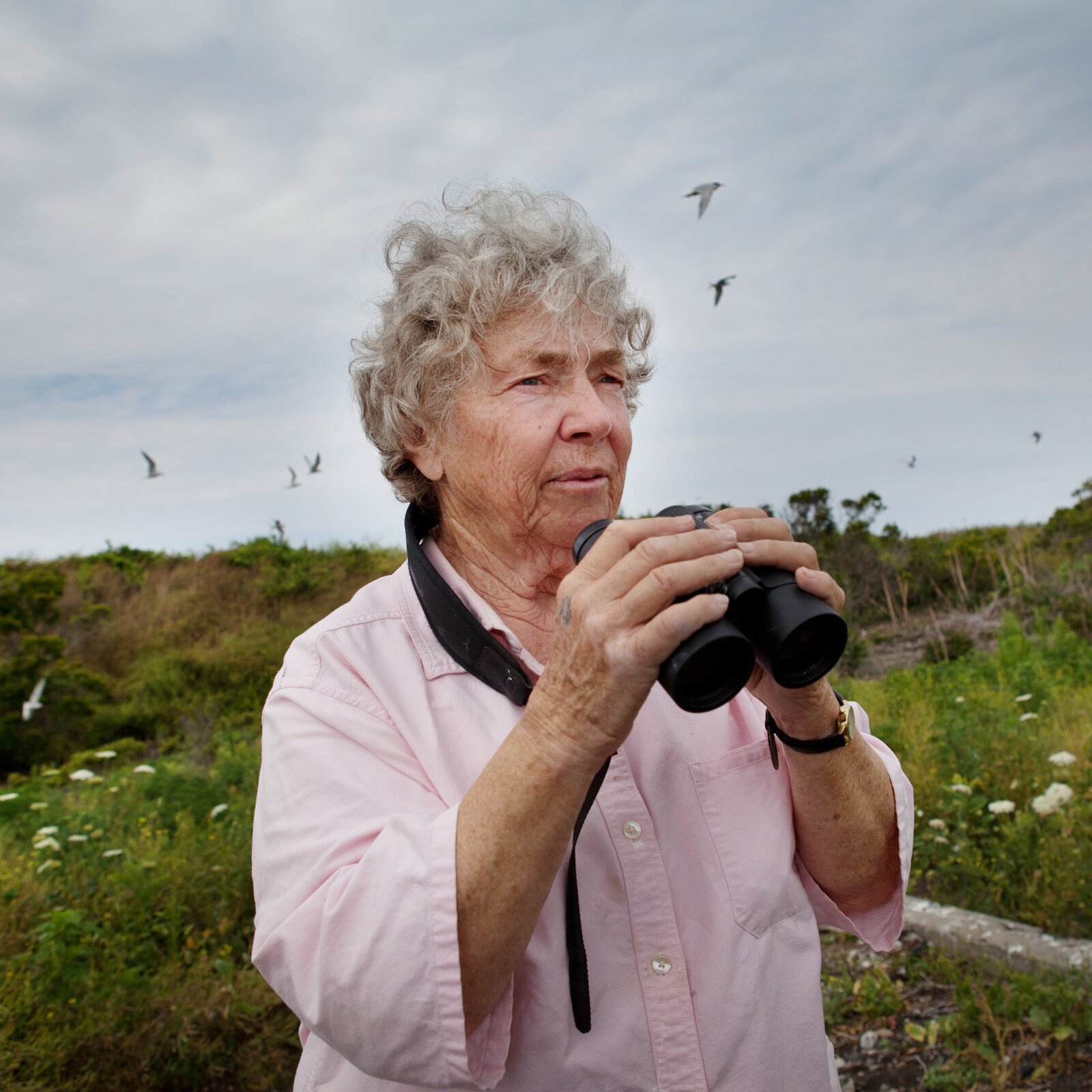Beginning in 1969, she spent five months a year on Great Gull Island, leading teams of young volunteers devoted to preserving the seabirds.
Beginning in 1969, she spent five months a year on Great Gull Island, leading teams of young volunteers devoted to preserving the seabirds.
Beginning in 1969, she spent five months a year on Great Gull Island, leading teams of young volunteers devoted to preserving the seabirds.
Helen Hays, anintrepid ornithologist who for nearly 50 years led scores of volunteers to Great Gull Island, a postage-stamp islet in Long Island Sound, where they endured dive-bombing birds and fierce ocean storms to help revitalize it as one of the world’s largest nesting sites for common and roseate terns, died on Feb. 5 in Scarsdale, N.Y. She was 94.
Her brother, James Hays, said the death, at a care facility, was from dementia.
Terns, both the common and roseate variety, are compact seabirds sometimes confused with gulls. They are also Olympic-level migrators: After nesting in secluded places like Great Gull Island, they travel as far as Argentina for the winter.
Ms. Hays was quite the migrator herself. Every spring she would leave her Manhattan apartment for Great Gull, a narrow, 17-acre slip of land that had been a U.S. Army fort until the end of World War II, when the military gave it to the American Museum of Natural History for $1. It lies just east of the tip of Long Island’s North Shore.
As chairwoman of the museum’s Great Gull Island Project, she would set up camp among the concrete bunkers left over from the fort, welcoming the first of several dozen volunteers, mostly high school and college students, who would arrive for stints on the island over the coming months.
There is no running water or reliable electricity on Great Gull Island; supplies arrive on a weekly mail boat. Should storms hit — and they often do — the researchers simply rode out the weather.
The birds themselves could be a hazard. Aside from their ubiquitous droppings — on the ground, on handrails, falling like rain from overhead — terns are terribly territorial, constantly pecking at the human interlopers. Ms. Hays took the occasional nip in stride; others wore straw hats with fake flowers stuck in the brims, to give the terns something other than a head to attack.
Discover more from World Byte News
Subscribe to get the latest posts sent to your email.

